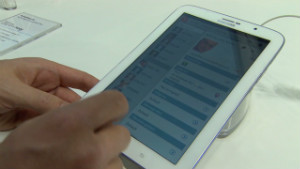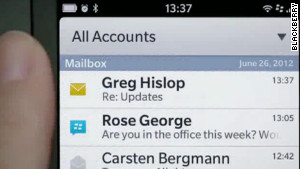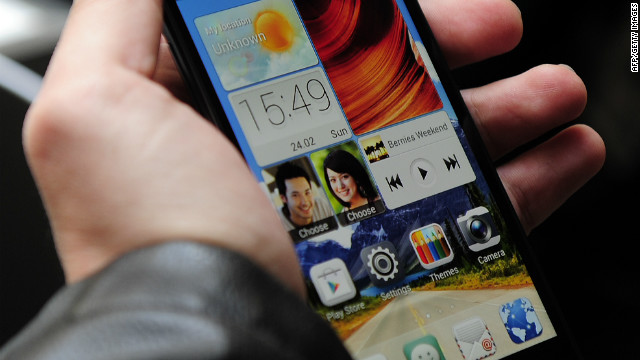Robotic balls and GPS walking sticks: Latest bizarre tech trends
STORY HIGHLIGHTS
- GPS-enabled walking stick among the usual uses for mobile technology on display at Mobile World Congress in Barcelona
- Other gadgets included the YotaPhone, a device featuring both a color touch screen and a screen using low-power monochome e-ink
- Mitten-ready mobiles, robotic balls and temperature-sensing microchips were also on display
Barcelona, CNN (CNN) -- There were no major announcements and no breathtaking new gadgets, but this year's Mobile World Congress did offer up more than its fair share of unexpected uses for digital technology.
Here are a few of the stranger sights that were creating a buzz around this year's event in Barcelona.
GPS-enabled walking stick
Clearly aimed at the elderly, or anyone with walking difficulties, this prototype from Japan's Fujitsu is a stick fitted with GPS navigation features, health monitoring sensors and Bluetooth and wireless connectivity.



The stick, known as Generation, allows relatives, carers or perhaps medics to track the user's real time movements while also recording heart rate. The stick also has the potential to summon emergency services.
While the stick is some way off launch, Fujitsu has clearly been putting a great deal of thought about how its technology can benefit senior citizens -- a shrewd move given Japan's aging population. It has also created a phone specifically aimed at the elderly, featuring a large keypad and sound enhancement.
YotaPhone
Paddy Smith from Stuff drew our attention to this quirky two-faced device. Here's what he had to say:
A smartphone running Google's Android operating system and a 4.3-inch touchscreen on the front? You might be thinking there's no shortage of those around, and you'd be right, but the YotaPhone offers something none of the others can: a second screen, on the back of the phone.
This screen uses the monochrome e-ink technology seen in Amazon's Kindle and other e-readers, and uses very little battery power. The screen can be customized to show whatever image you please, but more interesting are the apps that allow it to display Twitter, Facebook and RSS feeds, or a clock or weather report.
Sensirion micro temperature sensor
This tiny speck of technology will give mobiles the ability to measure temperature and humidity, opening the door to a whole new realm of applications.
Sensiron says its device will give your mobile the ability to "feel," offering all kinds of biofeedback possibilities.
At the very least it should enable it to accurately read the weather conditions around you. It could also prove an invaluable healthcare or sports monitoring tool.
Next, presumably, we will get phones that can smell and taste.
Glove-friendly touch screens
Forget its claims to being the world's fastest phone. Ignore the brilliant touch screen and the powerful 13 megapixel camera. Disregard its slender 8.4mm side profile.
What sets Chinese manufacturer Huawei's flagship Ascend P2 smartphone apart is the fact that it can be operated by users wearing gloves.
Mitten-ready mobiles aren't new -- Nokia's Lumia 920 also responds to fingers cloaked in fabric -- but for anyone who regularly checks their phone in freezing conditions, any fresh addition is a great leap forward.
Robotic balls
A popular attraction in one corner of MWC were robotic Sphero balls that can be controlled using a Bluetooth-equipped smartphone.
Sphero's manufacturer, US-based Orbotix, was in Barcelona to launch a new range of augmented reality games, including one in which the robotic ball becomes, in Orbotox's own words, "a cupcake-munching beaver."
Running, jumping and standing still
Taiwan's HTC, having nothing new to promote beyond last year's showstopping One X, instead decided to offer up a troupe of Parkour athletes who wowed congress-goers with their acrobatics. Why? We have no idea.
Barry Neild contributed to this story from London, England.
 Chinese manufacturer Huawei's flagship Ascend P2 smartphone can be operated by users wearing gloves.
Chinese manufacturer Huawei's flagship Ascend P2 smartphone can be operated by users wearing gloves.
No comments:
Post a Comment